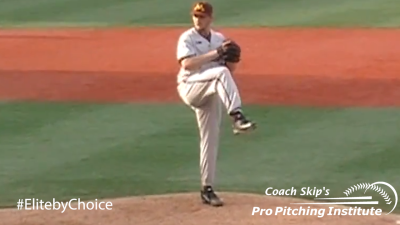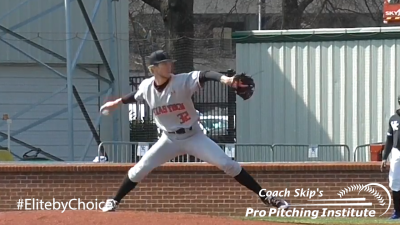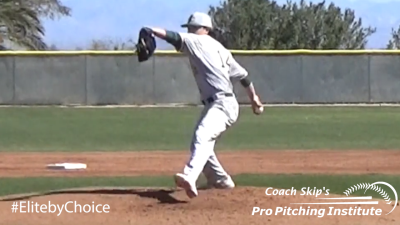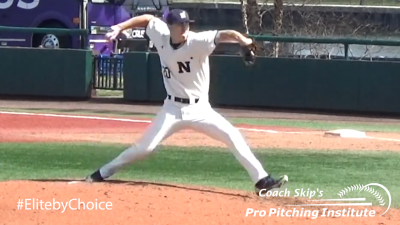Testimonials
“I truly believe Skip has turned our Team’s pitchers into one of the premier pitching squads in the area.” ~ Derek P., Volunteer Pitching Coach
“It’s amazing how you can fix my motion from thousands of miles away.” – Aaron B., Pro Prospect.
“After one session, I used my lower body much more, and my fastball command was much better.” ~ Dave C., Collegiate Prospect
“Coach Skip took one look at my motion, told me where to focus, and my pitches immediately went back to my target.” ~ Felix C., Collegiate Pitching Prospect
“I feel like Coach Skip is standing next to me.” ~ Allen M., High School Pitcher
“Coach Skip fixed my command without talking about my arm slot. Unreal!” ~ Dick B., Collegiate Pitcher
“When my Coach talks about my release point or stride, I know he’s hurting my performance.” – Ken M., High School Pitcher.
“Your pitching knowledge and practical approach to analyzing a pitcher’s movements will positively and immediately impact pitchers of all ages.” ~ Les W, an MLB Pitcher.
“Skip gave my Son a simple motion that dramatically improved accuracy, confidence, and velocity.” ~ Jack Q., a Middle School Pitching Dad.
“I no longer think about my mechanics. I just simply take a step and watch my pitches travel into my target.” ~ Sam D., a High School Pitching Prospect.
“I highly recommend Coach Skip. I’m throwing harder and, more importantly, more accurately.” ~ Greg K., D1 Pitcher
“Forget what you think you know. Skip is a MUST.” – Keith R., Ex-Pro Pitching Dad
“My Son was thrilled to learn how easy you made it to command his pitches. He can’t wait for his next session.” ~ Nolan D., High School Pitching Prospect
“If your son is serious about pitching, I would send him to no one else but Skip.” ~ Garrett K., D2 Pitcher
“Since coming to Skip, my son has been routinely pitching with confidence and big-time results.” ~ Sid B., Pitching Dad
Oliver L., Pitching Dad, sent Coach Skip this review … “I’ve watched my eight-year-old boy’s pitching skills develop far beyond the initial expectations I originally hoped for.”
Henry O., D2 Pitcher, sent Coach Skip this review … “In my first session, Coach Skip taught me how to do what 100’s of Coaches have always said I should be doing.”
Dominic K., Collegiate Pitching Prospect, sent Coach Skip this review … “I can’t believe how simple Coach Skip made it to throw strikes.”
“After working with Skip, I’m proud to say I was named All-League 1st team in the Beach Collegiate Baseball League in Myrtle, SC.” ~ Dan S., JUCO Pitcher
“Coach Skip has given me the competitive edge I’ve spent years searching for.” ~ Tommy C., D1 Pitcher
“I can’t believe it. Coach Skip taught me One position, one movement, and the ball just goes right into my catcher’s glove.” ~ Manny F., High School Pitcher
“I was pleasantly surprised how the simple front leg lift position Coach Skip taught me produced the command I need to move forward.” – Lenny P., Minor League Prospect
“I follow Coach Skip’s advice, and I see more of my pitches end where I want. It’s unbelievable! – Darren C., Collegiate Pitching Prospect
“Coach Skip proved to me that, for years, my Coaches had me focused on the wrong stuff!” – Rocco T., Professional Prospect
“It’s no longer ‘How do I command the ball?’ I follow what Coach Skip recommends and command my pitches.” ~ Paul D., Collegiate Pitching Prospect
”With the front leg lift position Coach Skip presented, I open my front shoulder, and the ball goes where I want.” ~ Tom S., High School Pitching Prospect
“If you don’t think your front leg lift can make a difference, you’re wrong, and this program proves it.” ~ Justin F., High School Pitcher
“Once my son changed my foot placements, I was surprised to see more pitches finish closer to his target.” ~ Tyler P., Pitching Dad
“I don’t understand how this works, but all I know is that what Coach Skip presents does work.” ~ Hal. H, Pitching Dad
“Coach Skip’s instruction is easy to follow and very effective,” ~ Jeff S., Pitching Dad
“It’s amazing how, with Coach Skip, my pitching velo comes a lot closer to the speeds I see when I sprint toward a screen.” ~ Bill R., High School Pitching Prospect
“Coach Skip taught me how to use my body to dominate the Hitters I face.” ~ Michael F., High School Pitcher
“Coach Skip shows the energy, passion, and knowledge for coaching kids at all skill levels.” ~ Bob H., Minor League Pitcher
“Coach Skip was able to teach my Pitchers in a way they can understand and quickly apply.” ~ Chuck J., Rec. League Pitching Coach
Discover a Much Anticipated Motion Today …
Video Instruction | In-Person, South Jersey Pitching Instruction



